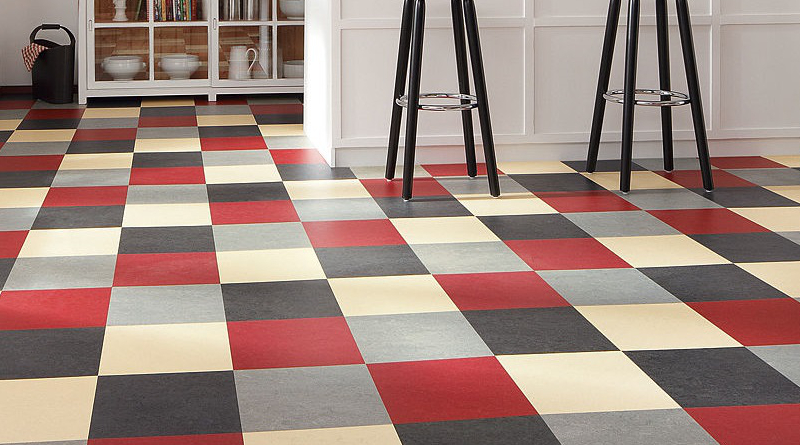
Linseed oil, cork flour and jute fabric – natural materials for healthy living in many colors: linoleum.
Before PVC became popular as a floor covering, linoleum was the first choice when it came to hard-wearing floors. The discovery of linoleum dates back to the English chemist Frederick Walton. Originally Walton was busy trying to dry colors quickly when he accidentally put a rubbery layer on a can of linseed oil. In a series of other experiments and with the addition of other substances, he managed to produce a durable covering, which he put on jute. The linoleum was born. His name still goes back to the starting material linseed oil. It is composed of the Latin “lini” for linen and “oleum” for oil.
In addition to linseed oil, the linoleum composition consists of cork flour, natural resin and ground limestone, which can be colored by pigments in virtually any clay. The jute as carrier material corresponded to the materials used predominantly at the end of the 19th century and was able to assert itself over the long success of the linoleum. Only in the 1950s and with the invention of PVC, the linoleum was pushed into the background. Not the quality, but the lower cost was the decisive factor.
The advantages of linoleum
variety of colors
durable
Lifespan 25 – 40 years
pure natural product
pleasantly soft pedaling sensation
Underfloor heating possible
antistatic and antibacterial
hygienic flooring
easy care
color stable
The disadvantages of linoleum
not suitable for wet areas
Joints must be welded
Return to natural materials
After the time when the products of the chemical industry were perceived as blessings, the U-turn came back to natural materials. Not only the then partly unhealthy exhalations from floor coverings were in the criticism, also the disposal gave the consumer more attention. Linoleum experienced its renaissance.
In the manufacture of the materials prevail strict criteria. For example, ecologically produced linoleum floor coverings do not contain any wood flour from tropical trees; instead, only raw materials derived from controlled, sustainably managed forests are used. Preference is given to using trees that grow in northern or temperate climates. Something similar can be said about the pigments used: Heavy metals in the colors are excluded today. The complete linoleum flooring must be biodegradable.
Thus, modern linoleum flooring is superior to Walton’s linoleum in many ways: over the years, the early linoleum became hard and brittle. In addition, it expected a costly care. Floors that were not waxed regularly lost their appeal. The contemporary linoleum, however, retains its pleasant foot feel even without strenuous care and an additionally applied protective layer keeps it attractive for many years. It feels soft and warm.
From the roll or as a laminate with click system
Linoleum can come into the household as roll goods, be available as a click laminate or beautify the room as tiles. The full-surface laying takes over the trade and at the same time ensures the bonding of the edges, so that no water penetrates. The linoleum would otherwise warp and become wavy. The installation with click system can be done by the do-it-yourselfers. For this purpose, individual elements are laid floating. The linoleum is applied to a hardboard. An additional cork layer at the bottom serves as impact sound insulation.
Colors and design options
Linoleum is available in almost every color variant. Due to the different colors already in the production of the individual design of the floors are virtually unlimited. The specialized trade holds numerous decors and patterns. Even marbling is possible. With a little manual skill, linoleum allows virtually any sophisticated floor design.
 savillefurniture Interior Design Ideas
savillefurniture Interior Design Ideas